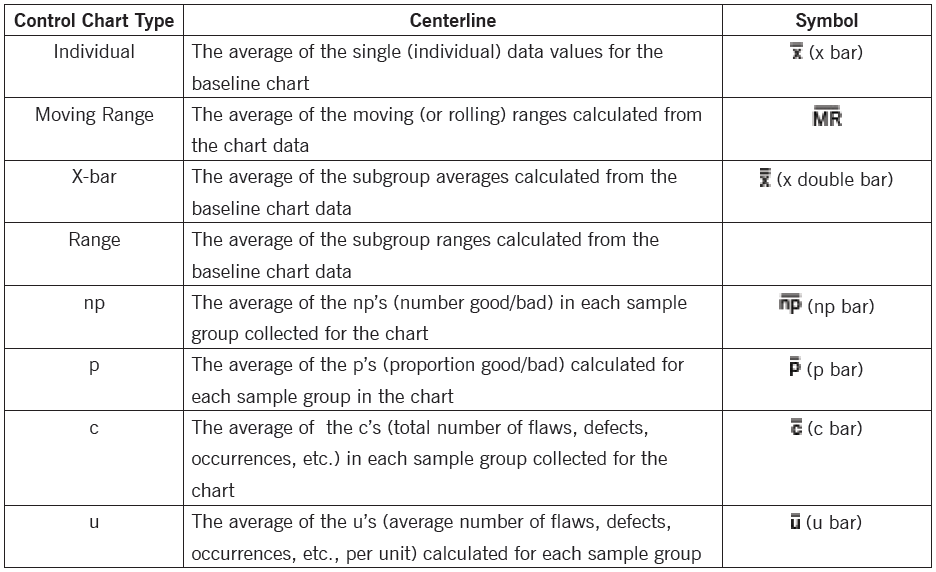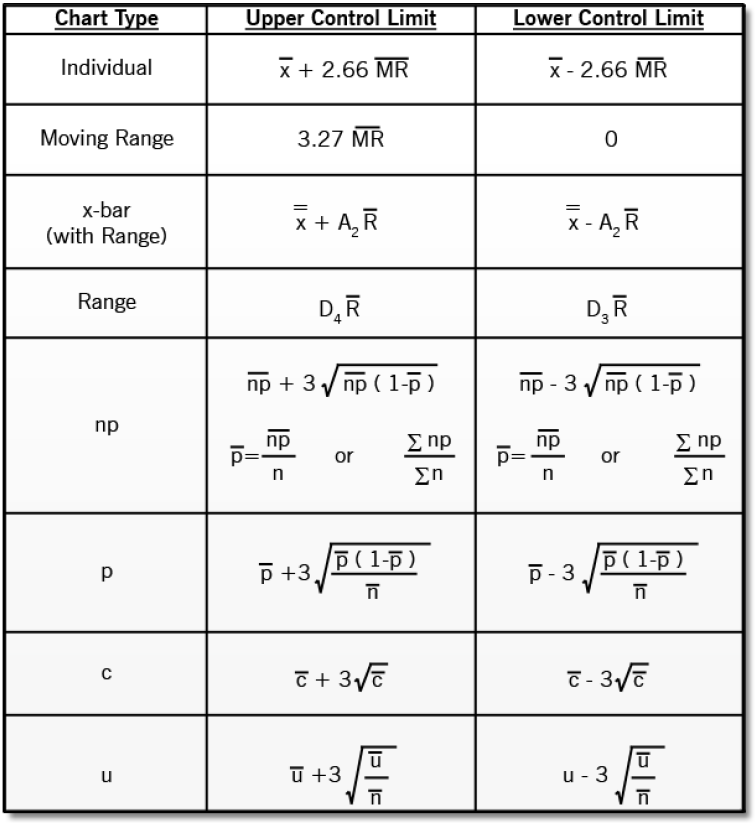1. The data must be continuous.
2. The sample size is 1 and cannot vary.
3. Collect the data in a consecutive manner. (In production order)
4. For the first chart on a process, collect at least 20–25 sample groups to ensure that an adequate measure of process variation has been taken.
5. Calculate the data points to be plotted on the chart.
- x: Each time period’s individual data value
- MR: The absolute difference between each adjacent pair of individual data values. For example, • assume that the 2nd, 3rd, 4th and 5th individual ranges are as follows: 7 9 8 6. In order to identify the first moving range, find the absolute difference by considering the 7 and the 9. The absolute difference between the two numbers is 2. To get the next moving range, slide over one notch to find the absolute difference between the 9 and the 8. The absolute difference is 1. To find the next moving range, slide over one more notch to find the absolute difference between the 8 and the 6. The absolute difference is 2. That’s why they call this a “moving range” because you keep sliding over one notch each time to find the next moving range value.
6. Calculate the centerline for the chart. Note: The centerline is always the average of all the plotted data 6. points in the start-up group.
-
 (x-bar): The average of the individual data values in the baseline chart data
(x-bar): The average of the individual data values in the baseline chart data  (MR-bar): The average of the Moving Ranges calculated from the adjacent data values in the baseline chart data
(MR-bar): The average of the Moving Ranges calculated from the adjacent data values in the baseline chart data
7. Calculate the 3-sigma control limits for the chart using the appropriate formula and constant factors as shown in the following tables:
8. Calculate the 3-sigma control limits for the individual x and moving range chart using the following formulas.
Note: D3 and D4 were obtained from the Control Chart Constants Table for a sample size of n = 2 since the Moving Ranges were calculated using two adjacent time periods. The value of 2.66 used in the formulas for the Individual chart control limits is based on the E2 factor for a sample size of 2. Should you decide to base your Moving Range on a span of more than two time periods, you will need to obtain the correct constant from an E2 Constants Table.




